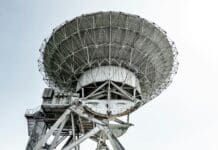This post is also available in:
 עברית (Hebrew)
עברית (Hebrew)
Satellite swarms have become more common in the space industry in recent years, as many satellites that work together provide a more cost-effective and versatile alternative to one large and expensive satellite.
Recently, researchers from Stanford University’s Space Rendezvous Lab conducted the first-ever test of a swarm of satellites for autonomous navigation in space. This experiment is known as the Starling Formation-Flying Optical Experiment (StarFOX). This method is expected to increase accuracy, coverage, flexibility, robustness, and autonomy.
In the experiment, four small satellites were able to move as a group, using only visual input from their onboard cameras to calculate their orbits. The 2D camera on each satellite assists in precise navigation and collision prevention. The satellites operate by using the unchanging location of stars to determine their direction, with advanced onboard algorithms that convert these observations into exact orbital data, according to Interesting Engineering.
In order to precisely measure trajectories, the satellites incorporate the sophisticated Absolute and Relative Trajectory Measurement System (ARTMS). ARTMS is designed to provide precise measurements of a satellite’s path and position by integrating multiple algorithms: image processing, batch orbit determination, and sequential orbit determination.
The Image Processing Algorithm starts by capturing and analyzing images to identify celestial objects and determine their angular positions. Then, the Batch Orbit Determination method uses these angular positions to compute an initial orbital trajectory for each satellite, which serves as a baseline path. After, the Sequential Orbit Determination algorithm continuously refines this trajectory by incorporating new image data as it becomes available. This ensures that the satellites’ path remains accurate and up-to-date.
The press release explains: “At its core, angles-only navigation requires no additional hardware even when used on small and inexpensive spacecraft. And exchanging visual information between swarm members provides a new distributed optical navigation capability.”
Achieving accurate and reliable navigation for a satellite swarm has been very technologically challenging due to the limitations of current ground-based systems, which struggle beyond Earth’s orbit and cannot avoid space debris. However, the development of an autonomous swarm navigation system could soon revolutionize this field, potentially enabling the deployment of fleets of satellites for accurate scientific data collection and Earth observation.
Please find the study on arXiv.


























